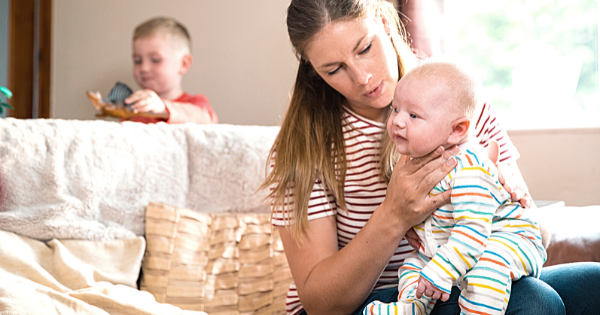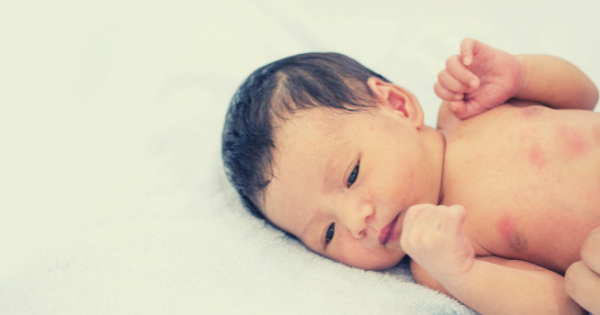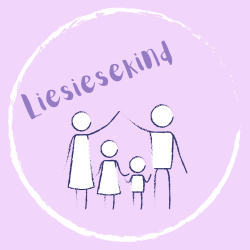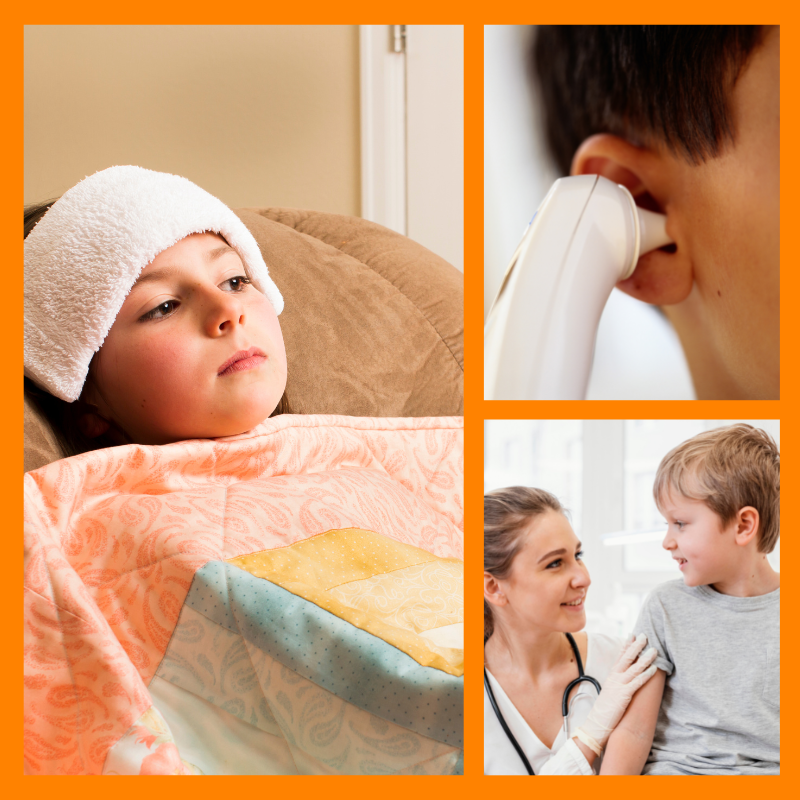In today’s post, I’m sharing some of the commonplace ailments in babies and toddlers. It can be stressful when your little one is not well, especially if you’re a first-time parent. As parents, we would do anything to make them feel better as soon as possible. Here is some helpful information to help you identify some of the usual ailments that babies and toddlers will have at some point.

10 Commonplace Ailments in Babies And Toddlers
1. Fever
When your child has a fever it can be overwhelming, but it is often a good thing because it is a sign that your baby’s immune is fighting some infection or sickness. Be on the lookout for a rash, coughing, diarrhea, or lethargy. To help bring the fever down, you can do the following:
- Make sure they drink lots of fluids
- Give them a lukewarm bath
- Place a lukewarm washcloth on their forehead or on the areas of the body that feels hot (the washcloth must not be cool or cold. It must be lukewarm).
- Dress them in lightweight clothing or remove their clothes when necessary
Call Your Doctor Immediately When:
- Your baby under three months has a rectal temperature of 100.4 degrees Fahrenheit or higher
- Your infant is between 3-6 months with a fever of 101 degrees Fahrenheit or higher
- Your baby keeps crying, is irritable, and cannot be comforted
- Fever accompanied by a rash or colored spots can signal purpura or petechiae which are serious conditions. It results from blood vessels that are leaking blood.
2. Gassiness
It is perfectly normal for babies or young toddlers to be gassy. To avoid gassiness in babies, burp them regularly and feed them slowly. Take burp breaks in between feeding. When you use baby formula, try to avoid air bubbles by not shaking it too much.

3. Teething Pain
From around six months, your baby’s teeth will start poking through their gums, which can cause a lot of discomfort or pain. You can offer relief by giving them something to chew on like a teething ring or a cold washcloth. I’ve used a Baltic amber teething necklace for my son and it works incredibly well. Gone were the days of excessive drooling, pain, and discomfort. Just make sure you are buying one from a reputable buyer. It must be an authentic Baltic amber necklace.
4. Stuffy Nose
Do not use over-the-counter cold medicines for children younger than four years old. Rather opt for saline drops to thin the mucus and a nasal aspirator or bulb syringe to clear up congestion in the nose. A vaporizer can do wonders to help them breathe a little easier at night.
5. Rash
Your baby’s skin is highly sensitive and it is normal to notice a rash every now and again. It can be anything from milia (little white bumps), or pimples, to eczema (dry, red, and itchy patches on the skin). To avoid diaper rash, be sure to change nappies often and apply a protective bum cream.
My favorite bum cream was the Clicks Made For Baby bum cream which is budget-friendly, but effective. I’ve also used Bennetts, Bepanthen, and Fissan. Sudocrem works well for severe baby rash from teething. If your baby has a severe and painful rash or you notice blisters and a fever, call your doctor or pediatrician.

6. Diarrhea
Diarrhea can be caused by various factors – having trouble with digesting some foods, too much milk or fruit juice, or an infection, among others. If your baby or toddler has diarrhea, keep them hydrated. If he’s on solids, avoid greasy or high-fiber foods. If diarrhea persists for longer than 24 hours and your baby is under six months with fever or other symptoms, call your doctor. Also, look for symptoms that include fast heart rate, belly pain, black or bloody stool, vomiting, or peeing more than usual.
7. Stomach Pain
When babies have a stomach ache, they will spit up, cry a lot, and arch their backs. Stomach ache is caused by certain foods, colic, an infection, reflux, or other factors. Some toddlers might have a tummy ache when they’re trying new foods. Most belly aches are brief and harmless, and will usually clear up within a day. If the condition persists or your baby becomes lethargic, runs a fever, vomits, or has diarrhea, call your doctor.
8. Constipation
Some babies have a bowel movement several times daily while others might only have one every few days. Constipation happens when stools are painful and hard to pass. Your doctor might recommend giving your child a bit of prune juice or water. You also might have to limit dairy intake to only sixteen ounces a day. If the issue persists or you notice other symptoms in your baby like belly ache or vomiting as well, call your doctor.

9. Vomiting And Nausea
Most babies spit up after a feed. Small kids can get upset stomachs as well. If your baby or toddler has nausea and throws up, be sure to give them liquids to avoid dehydration. If the vomiting continues for longer than a few hours and your baby develops a fever or can’t keep down fluids, call your doctor.
10. Coughing
Coughing in conjunction with a mild fever is usually from a cold. However, a persistent high fever might signal the flu or pneumonia. Listen to the sound of the cough. Seal-like barking could signal croup. A wheezing cough might be due to an infection or asthma. Babies with coughing spasms and a whooping noise usually have pertussis.
It is not recommended to give toddlers or babies younger than four years any cold or cough medicine. Some fluids and a cool-mist humidifier might offer some relief. If the coughing persists, and you’re unsure about the cause, call your doctor.
Conclusion
It’s not easy for parents to have a sick child and we want to make it better as soon as possible. However, try to remain calm and follow your instincts. Be on the lookout for symptoms that might signal a more serious issue. These include rashes, fussiness, changes in appetite, lethargy, having trouble breathing, rapid heartbeat, seizure, high fever, and not peeing frequently enough.
Any changes in your baby or toddler’s normal behavior might be due to an underlying medical issue. If you are not sure what the cause might be, it’s better to call your doctor. In the meantime, I hope these 10 commonplace ailments in babies and toddlers have been helpful, and it has answered some of the questions you might have had.





Be the first to reply